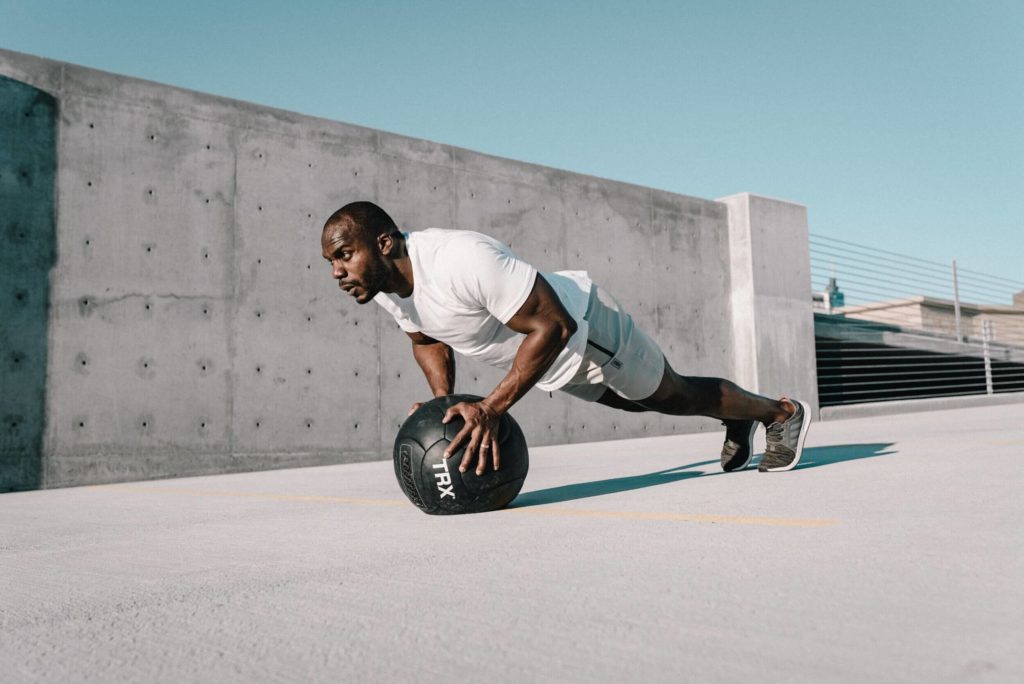Beyond your training and sophisticated gear, your fueling strategy serves as the maker or breaker of your athletic activity. When you work out, think of your body as a high-performance race car and glucose as the fuel – the primary source of energy for your brain, muscles and other organs. How does the body source this energy? One of the precursors of a healthy glucose range is a balanced diet that includes proteins, fats, and carbohydrates. Your blood sugar levels can either undermine or improve your workouts. What are the factors that impact the way in which blood glucose is processed and converted to energy?

Highlights
- Glucose is a key aspect of athletic performance and overall health,
- Levels of blood sugar that are too high or low can hamper athletic performance and have negative consequences,
- One of the key determinants of athletic performance is the body’s metabolic flexibility—the ability to use both glucose and fat optimally for energy.
How blood sugar affects athletic performance
There are different types of sugars in food that can affect how glucose enters your bloodstream and how it is used. Both high and low blood sugar can have adverse effects on athletic performance. Recent research reveals that people could derive fewer benefits from exercise with consistently elevated blood sugar levels. Research in the journal Nature Metabolism suggests that when blood sugar is high, it can be a predictor of low oxygen consumption during aerobic activity, and can prevent muscle growth in response to exercise and training.
Aerobic exercises (endurance activities or cardio) done routinely can cause your muscle fibres to increase the amount of oxygen and glycogen used to rebuild them, but high glucose prevents this from happening, so your response to exercise will be more limited. If this occurs routinely for a long time, it can hamper muscle growth. This is consequential for overall health too since low aerobic fitness is correlated to an increased risk of premature death.

When you work out, your body requires glucose and free fatty acids to generate energy. This sugar is sourced from the blood, the liver and the muscles. It is stored in the form of glycogen in the liver and the muscles. In the first 15 minutes, the sugar is acquired from the bloodstream. After that, the fuel is glycogen from the liver. Low glucose levels can adversely impact athletic performance too. Half an hour into the workout, the source of energy is fatty acids. Exercise can thus exhaust your sugar and glycogen stores. The body restocks these reserves but depending on how strenuous the exercise was and the duration of the exercise, it may take 4-6 hours.
The key to good performance is fat and protein intake in the diet. Fat intake should be adequate to provide the essential fatty acids and fat-soluble vitamins, as well as to help provide the required energy for weight maintenance. Fatty acids improve the movement of oxygen into skeletal muscle during exercise and fat-soluble vitamins boost bone health among other functions. The way in which the body processes sugar during physical activity is tied to a concept called metabolic flexibility.
Metabolic flexibility
Metabolic flexibility is the ability of the body to sustain a dynamic balance between the two fuel sources our body has—fat and sugar. With metabolic flexibility, the body is able to use whatever fuel is available at the time. It is what allows humans to go without food for a period of time. It is affected by many factors like our diet composition, our current physical state, and the intensity and duration of our workouts, amongst others. These fuel-burning processes are referred to as fat oxidation and glucose oxidation.
Glucose oxidation: When you eat a meal, your body metabolizes that food, breaks it down into sugar and uses it for energy production. That fuel is glucose. Insulin, the hormone secreted by the pancreas, ensures that the glucose released in the bloodstream is absorbed by the cells. This process is known as glucose oxidation.
Fat oxidation: If some time has passed since your last meal, your metabolism can switch to burning fuel already present in your body. This fuel is your fat reserve. Fat is like the log of firewood that burns slowly and steadily for many hours. The body uses fat as a source of energy when insulin is low, which happens as a result of reducing carb intake and working out. When the body burns fat, the brain sends a signal to the fat cells to release fatty acid molecules into the bloodstream. These fatty acids are picked up by the muscles, lungs and heart. The energy stored in the molecules is broken down and used to carry out various activities. The remnants are discarded either during respiration, in exhaled carbon dioxide, or in the urine.
A disruption in the ability to toggle between the two sources of energy can lead to metabolic inflexibility. Fat is the primary source of energy for the body when an individual is at rest. Eating more carbohydrate-rich food frequently is one of the ways in which the body can become accustomed to switching the dominant source of energy to carbs (sugar), paving the way for metabolic inflexibility.

The role of glucose as fuel
Maintaining your glucose levels can help your body retain its metabolic flexibility. Additionally, when it comes to athletic performance and exercise, your glucose level is an important determinant of effort and performance. Proper nutrition is crucial for an athlete to optimize his or her performance in training and competition.
An athlete will have different macronutrient (carbohydrates, protein and fat) goals depending on the sport, the timing of exercise and season status. They should have both daily and activity-specific goals for obtaining the fuel necessary for successful training. Athletes have many strategies they can use when fuelling for performance. Nutrition plays a crucial role in optimizing training sessions as well as in recovery and metabolic adaptation.
Calories are a measure of your body’s energy. The amount of energy in each macronutrient is not the same. While each gram of fat carries 9 calories, a gram of protein and carbohydrate holds 4 calories each. This may lead you to erroneously assume that fats are the optimal choice for athletic performance since they represent the highest amount of energy per gram.
But it is more nuanced than you think: carbohydrates offer less energy but are more easily accessible. Though fat molecules offer more energy, they take more time to disband and present themselves as potential fuel. Both fats and carbohydrates can be beneficial for performance if used optimally for energy.

The role of fat as fuel
While the quintessential approach to replenishing glucose levels is to turn to a carbohydrate-rich meal, studies now show that switching to a low-carb meal with sufficient healthy fats might be a better way to improve your metabolic flexibility. Remember that carb is not the villain. Complex carbs are your best bet for sustained energy a few hours before the workout.

Generally, more fat is used at low-intensity thresholds and more carbs are used at high-intensity thresholds. Knowing your threshold is a useful way to quantify effort and distribute your training load; it can also help to identify the body’s need for different fuel sources. Augmenting fat-burning pathways could be a more favourable strategy than packing carbohydrates. Our bodies convert food to fat with prompt efficiency, creating a rich reservoir of energy. We can tap into this source for long-duration exertion. If we rely on this reserve over sugar for our metabolic processes, it could lead to better endurance and performance.
The capacity to burn fat has been shown to have a correlation with performance in Ironman competitions, which have durations of over 8 hours. Physical training without a change of diet is largely linked to fat-burning pathways in the face of higher performance, indicating the body’s preference to use fat instead of glucose.

Ideal glucose levels for athletic performance
For those who do intense exercises or are running a marathon, it is important to make sure their glucose levels remain within the healthy range. If that number dips below the range that is considered normal, you need to replenish your body with glucose before you do any more strenuous activity. The goal you set for blood glucose during activity is specific to you, but the optimal range for glucose levels before and after exercise is between 70-110mg/dL.

Optimising glucose levels
Although popular belief suggests that being active for a minimum of 30 minutes a day is enough to stay fit or maintain your glucose levels, this is not always the case. Studies now show that engaging in frequent activity throughout the day would be far more effective in maintaining glucose levels and improving long-term health. Even if you are someone who is at an ideal fitness level with a fitness regimen to match, you may still find that your post-meal glucose levels are far from ideal. This is linked to the time you carry out your workouts in the day and their duration.
Conclusion
Glucose is a key aspect of athletic performance and overall health. One of the key determinants of athletic performance is the body’s metabolic flexibility—the ability to use both glucose and fat optimally for energy. Nutrition plays a crucial role in optimizing training sessions and aiding recovery. It is important to have a diet that is balanced in terms of protein, carbs and healthy fats to ensure that glucose levels do not spike or crash during exercise.
Disclaimer: The contents of this article are for general information and educational purposes only. It neither provides any medical advice nor intends to substitute professional medical opinion on the treatment, diagnosis, prevention or alleviation of any disease, disorder or disability. Always consult with your doctor or qualified healthcare professional about your health condition and/or concerns and before undertaking a new health care regimen including making any dietary or lifestyle changes.
References
- Hyperglycaemia is associated with impaired muscle signalling and aerobic adaptation to exercise
- Why Do I Have Low Blood Sugars After Exercise?
- Balance of substrate oxidation during submaximal exercise in lean and obese people
- Gluconeogenesis during endurance exercise in cyclists habituated to a long‐term low carbohydrate high‐fat diet
- Rethinking the role of fat oxidation: substrate utilisation during high-intensity interval training in well-trained and recreationally trained runners








